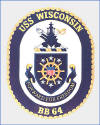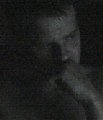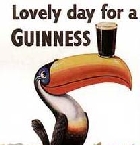Subchaser
Posts: 1201
Joined: 11/15/2002
Status: offline

|
These results are not gamey, in reality sometime less fighters caused comparable damage to Japanese forces, and Japanese themselves were using strafing runs with great success early in war. I think sometimes we should see such devastating attacks in UV/WitP, but not on a regular basis, results should be random, from 3 men killed up to 500 out. When fighters were strafing troops in jungle, results were miserable, but when SoBs went out to open….
quote:
P-400 Airacobras save the day at Guadalcanal
(portion of an article on the 67th Fighter Squadron written by Gerard Pahl that appeared in Warbirds International, July/August 2002)
Blue flames licked from the burbling exhaust stacks of the three fighters as they waited at the end of the runway called Fighter One. Over-heating was a real problem for the Allison V-1710 V-12s and when the engine temp began to rise so did the anxiety of the pilots. Adding to their discomfort, the pilots were already sweating from the musty heat and humidity of the nearby jungle. With first light, the three Bell Airacobras were flashing down the runway - heading into the rising sun to attack minions of the Empire of the Rising Sun. The fighters would be participating in one of the bloodiest engagements of the battle for Bloody Ridge. It was 14 September 1942.
Not long before their takeoff roll, Capt. John A. Thompson had reported to the "Pagoda" for his briefing - Col. Merrit Edson's Raider Battalion was barely hanging on to an elevated perimeter ridge which defended the southern approach to Henderson Field on Guadalcanal. The Marines had survived two nights of vicious attacks by Maj. Gen. Kiyotake Kawaguchi's brigade as well as bombardment from both sea and air. The leathernecks had only about 300 men left in their ranks, all of them prepared to fight to the end or blend into the forest to continue with a guerrilla war.
Captain Thompson and his two wingmen, Lt. B.E. Davis and Lt. Bryan Brown, had barely cleared the palms at the end of the runway, banking to the right when they had the bloody battle ground in sight. At the briefing a Marine officer, caked with the grime and dried blood of two days of almost continuous combat, had given the captain the relative positions of the American and Japanese troops on a crude map. Edson's 800+ men were fighting approximately the 1700 to 2000 Japanese troops that remained from a force of 2500 that actually made it to the ridge. The exhausted Japanese troops were getting ready for another attack - trying to break through the defensive line and capture the airfield. Without warning, the three P-400s swept in at tree top level! Thompson knew that to achieve maximum effect with his cannons and machine guns, the three would have to get as low to the ground as possible. The shark-toothed pursuits roared over the Japanese, guns blazing. Each plane was firing one 20mm cannon, two .50-caliber, and four .30-caliber Browning machine guns. Even with their different trajectories, considering the altitude and attitude at which the P-400s were flying, the withering fire decimated the regrouping enemy troops. Like a scythe, the Airacobras mowed down the Japanese soldiers with a wide swath all along the ridge.
The first pass was a surprise to Maj. Gen. Kawaguchi's men, but they had time to prepare for the next. As Thompson, Davis and Brown swept around for another attack, every pistol, rifle and machine gun available was pointed skyward. Again, the P-400s came in just a few feet above their victims, spraying the entire southern ridge with a barrage of bullets - this time, however, they were met with an equally intensive amount of small arms fire. Some of the Japanese soldiers, puddled into limp pieces of flesh, ending as mounds of congealed tissue on the ground. Others flew through the air as the larger bores tore at their bodies and mixed their blood with the volcanic mud of the island they would never leave.
In their dying efforts, however, they too drew blood from the enemy - this time in the farm of glycol bleeding from the radiator of Brown's craft. The young lieutenant had no other choice but to break off the attack and try to make it back to Henderson - these three P-400s were the only ones the Cactus Air Force had left.
Dank air mixed with the pungent smell of cordite leaving a coarse, bitter taste in Thompson's and Davis's nostrils and mouths as the remaining two aircraft swung around for another pass. Both planes had absorbed ground fire with no noticeable effect but the nerves of the pilots must have been jumping with electricity. As knots formed in their stomachs they continued their merry-go-round attack, but there was nothing merry about it. On the third run, the two remaining Airacobras came in so low it seemed they could have cut down the enemy with their propeller blades alone. The staccato of the machine gun fire counter pointed by the hesitating booms of the cannons had the same horrible effect as before. Some bodies exploded with the impact while others withered to the ground from the rifle-caliber machine guns. With no other option, the hapless Japanese returned fire, again with effect. This time Thompson had a stream of vapor trailing his aircraft as he too used the momentum of his attack to make it back to Fighter One.
Being in the only airworthy P-400 left on this Godforsaken island and the only plane that would withstand the entire fusillade of the enemy's wrath during another strafing run, one would forgive Lt. Davis if he gave up the attack and returned to base. But Davis knew that the Japanese had to he stopped. If not, Henderson would he lost and if Henderson was lost, Guadalcanal would be lost and if Guadalcanal was lost, the supply lines from the United States to Australia would he lost – he went in for another lonely pass.
The lieutenant continued his attacks and with each pass there was less and less returning small arms fire. Finally, he exhausted the ammunition and in his wake and the wake of the previous P-400s before him lay the now lifeless bodies of reportedly over 600 of Kawaguchi's finest. In this final action, the back of the Japanese advance was broken and the demoralized enemy retreated. For all intent and purposes, Guadalcanal was lost to the Empire and in essence, the Japanese had marched up to the line in the sand and were stopped dead in their tracks - they would never advance further east of Guadalcanal again. They would continue the struggle for this southern Solomon island, landing hundreds of men and tons of materials, the campaign was realistically lost and inexperienced American fighting men who only months before had been working in Montgomery Wards or pumping gas had won America's first amphibious operation against a seasoned enemy, hitherto thought to have been invincible.
Later, Maj. Gen. Alexander Vandergrift said that what the three airmen did would never make the newspapers, but that they saved Guadalcanal. Thompson received the Navy Cross while Brown and Davis received Silver Stars - they should have all been awarded Medals of Honor.
In fact Kawaguchi losses were not so severe, but caused by just 3(!) fighters.
_____________________________

|
 Printable Version
Printable Version
 Ouch....(for the Japanese...yay for Allies)
Ouch....(for the Japanese...yay for Allies) 












 I have no idea why it does this. Try it you'll see I'm right.
I have no idea why it does this. Try it you'll see I'm right.  I'm running the latest version.
I'm running the latest version.








 New Messages
New Messages No New Messages
No New Messages Hot Topic w/ New Messages
Hot Topic w/ New Messages Hot Topic w/o New Messages
Hot Topic w/o New Messages Locked w/ New Messages
Locked w/ New Messages Locked w/o New Messages
Locked w/o New Messages Post New Thread
Post New Thread